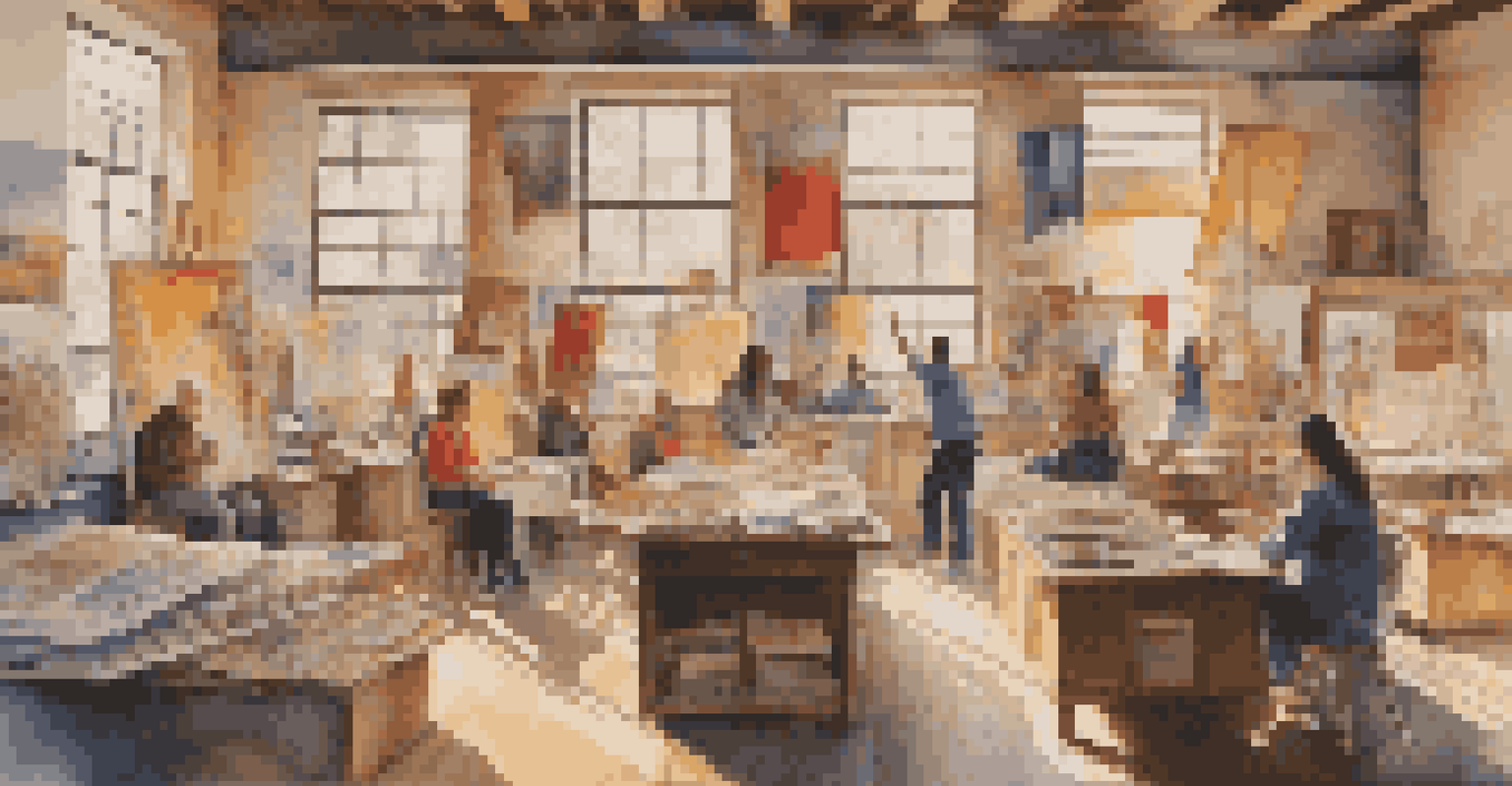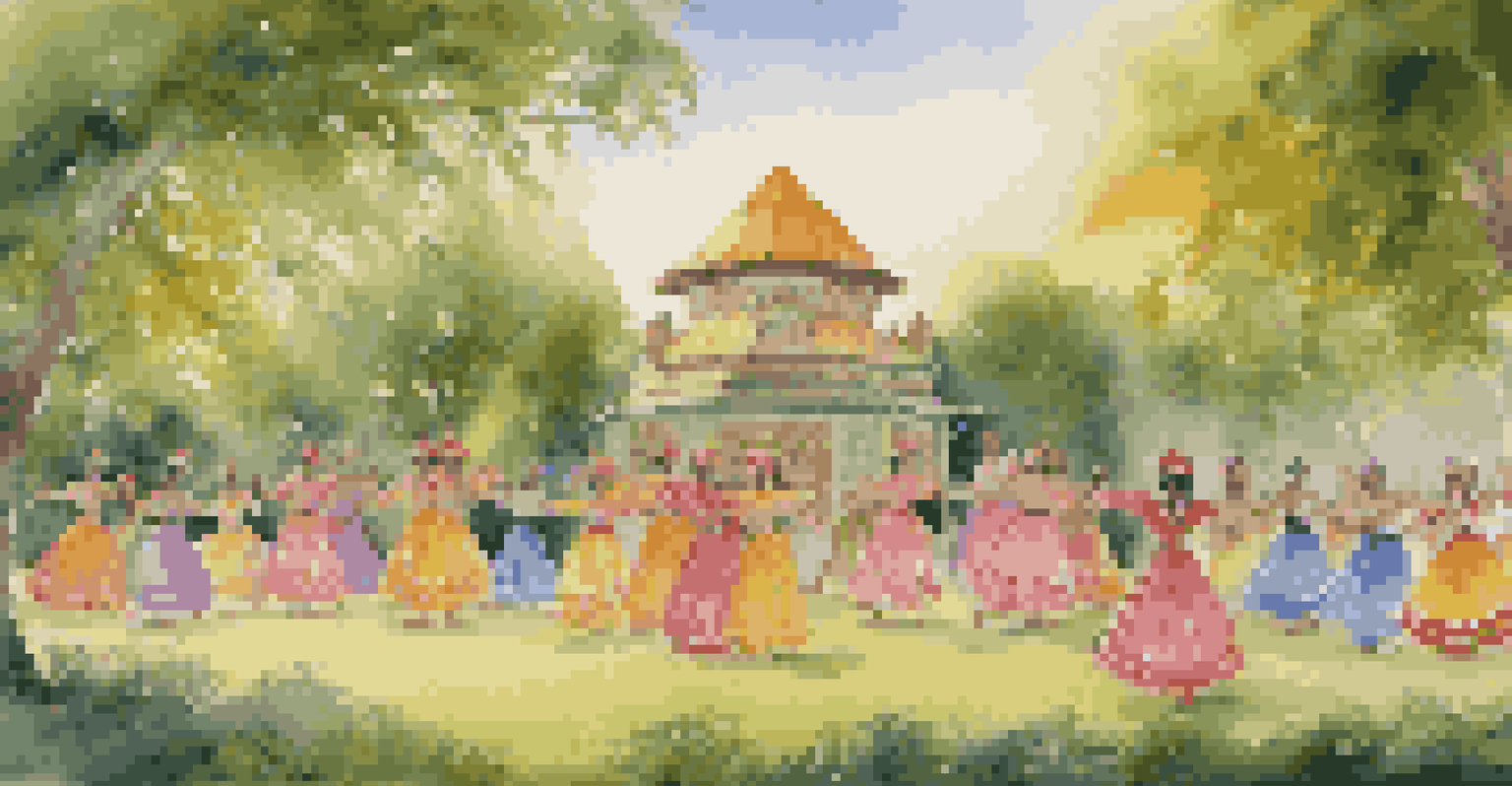The Role of Art in Shaping National Memory and Identity

Understanding National Memory and Identity
National memory refers to the shared recollections that a group of people hold about their past. It encompasses events, symbols, and figures that shape a nation's identity. This collective memory is vital in forming a sense of belonging and continuity among citizens.
Art is not a mirror to reflect reality, but a hammer with which to shape it.
Identity, on the other hand, is how individuals or groups perceive themselves and are perceived by others. It is often influenced by historical narratives, cultural practices, and societal values. Together, national memory and identity create a framework through which people understand their place in the world.
Art plays a crucial role in this dynamic, as it acts as a medium for expressing these memories and identities. Through various forms of artistic expression, societies can explore their histories, values, and aspirations.
Art as a Reflection of Historical Events
Art has an incredible ability to capture and reflect significant historical events. Paintings, sculptures, and performances often serve as visual and emotional representations of pivotal moments in a nation’s history. For instance, Picasso's 'Guernica' starkly conveys the horrors of war, resonating deeply with collective trauma.

These artistic representations become part of the national narrative, helping to shape how future generations remember these events. They can evoke emotions, provoke thoughts, and foster discussions about the past, making history more accessible to the public.
Through art, societies can confront difficult truths and celebrate victories, creating a nuanced understanding of their history that contributes to a collective memory.
Symbols and Icons in National Identity
Symbols are powerful tools in constructing national identity, and art is often at the forefront of this process. Flags, anthems, and monuments evoke strong feelings of pride and belonging. For example, the Statue of Liberty is not just an artistic creation; it symbolizes freedom and hope for millions.
Every artist dips his brush in his own soul, and paints his own nature into his pictures.
Artists frequently utilize symbols to convey messages about what a nation stands for. These symbols can inspire unity and a sense of purpose among citizens, reinforcing the values and ideals that the nation embodies.
Moreover, as national identities evolve, so too do the symbols associated with them, often leading to new artistic interpretations that reflect contemporary values and challenges.
Art in Promoting Cultural Heritage
Cultural heritage is integral to national identity, and art helps preserve and promote this heritage. Traditional music, dance, and visual arts celebrate a nation's customs and traditions, fostering a sense of continuity with the past. For example, indigenous art forms often tell stories and convey wisdom passed down through generations.
By showcasing these cultural expressions, art contributes to a shared understanding of a nation's unique history and identity. It allows communities to celebrate their diversity while also reinforcing what they hold in common.
As globalization spreads, the role of art in promoting and preserving cultural heritage becomes even more critical, helping to maintain a sense of identity in a rapidly changing world.
Art and Social Movements
Throughout history, art has been a catalyst for social change, influencing national identity and collective memory. Artists often use their platforms to address social injustices, inspire movements, and amplify marginalized voices. For instance, murals during the Civil Rights Movement captured the struggles and aspirations of African Americans, becoming iconic representations of that era.
These artistic expressions not only document the fight for social justice but also shape public perception and memory of these movements. They serve as rallying points, fostering solidarity and community among those advocating for change.
By embedding these narratives into the national consciousness, art plays a crucial role in reshaping societal values and identities.
The Role of Art in Education
Education is a vital avenue through which art influences national memory and identity. Incorporating art into educational curricula allows students to explore their heritage, understand historical narratives, and develop critical thinking skills. Engaging with art can make history come alive, fostering deeper connections to national stories.
Art education also encourages creativity and expression, enabling individuals to articulate their own identities and experiences. This personal connection to art can lead to a more profound appreciation of one’s cultural history and national identity.
By bridging the gap between past and present, art in education helps ensure that the stories and values of a nation continue to resonate with future generations.
Contemporary Art and Changing Identities
As societies evolve, so do their identities, and contemporary art reflects this transformation. Artists today often challenge traditional narratives, questioning national identity and memory. Through innovative forms of expression, they explore themes of migration, globalization, and multiculturalism, which are increasingly relevant in our interconnected world.
This contemporary lens allows for a broader understanding of national identity, embracing complexity and diversity. It encourages dialogue about who we are as a nation and how our identities are shaped by various influences over time.

By engaging with these themes, contemporary art not only reflects current realities but also shapes future identities, ensuring that the national memory remains dynamic and inclusive.
The Future of Art in Shaping National Identity
Looking ahead, the role of art in shaping national identity and memory is more crucial than ever. In an age of rapid change and digital transformation, artists have new tools and platforms to share their work. Social media, for instance, allows for instant dissemination of artistic expressions, reaching global audiences and fostering connections across borders.
As we navigate challenges like climate change and social inequality, art can inspire collective action and reinforce shared values. It will continue to serve as a mirror reflecting society's dilemmas and aspirations, guiding national dialogues about identity and purpose.
Ultimately, the future of national identity lies in the hands of artists who can creatively engage with these pressing issues, ensuring that art remains a vital force in shaping our collective memory and identity.